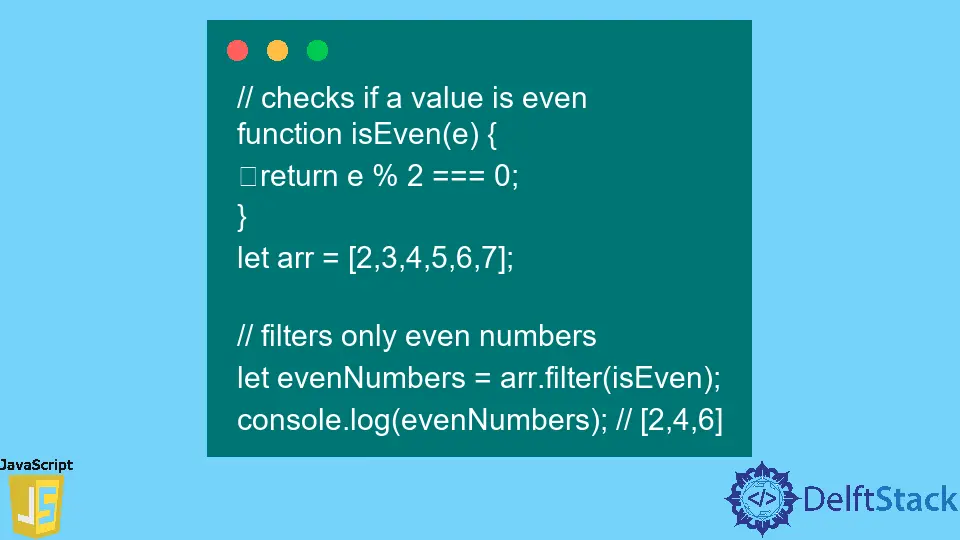Array Filter in JavaScript
-
Understanding the
filter()Method - Filtering Even Numbers from an Array
- Filtering Objects in an Array
- Chaining filter() with Other Array Methods
- Conclusion
- FAQ

When working with arrays in JavaScript, one of the most powerful and useful methods at your disposal is the filter() method. This method allows developers to create a new array containing only the elements that meet specific criteria, making it an essential tool for data manipulation and processing. Whether you’re filtering out unwanted values or extracting elements that satisfy a particular condition, understanding how to use the filter() method effectively can greatly enhance your coding efficiency.
In this article, we’ll explore how to use the filter() method, complete with practical examples and detailed explanations, ensuring you have a solid grasp of this essential JavaScript feature.
Understanding the filter() Method
The filter() method is an array method in JavaScript that creates a new array populated with elements that pass a specified test implemented by a provided function. It doesn’t modify the original array, which is a key aspect of its functionality. The syntax for the filter() method is straightforward:
let newArray = array.filter(callback(element[, index[, array]])[, thisArg]);
callback: A function that tests each element. Returntrueto keep the element,falseotherwise.element: The current element being processed.index(optional): The index of the current element.array(optional): The arrayfilterwas called upon.thisArg(optional): Value to use asthiswhen executingcallback.
Let’s dive into some practical examples to illustrate how this method works.
Filtering Even Numbers from an Array
One common use case for the filter() method is to extract even numbers from an array. Here’s how you can achieve that:
const numbers = [1, 2, 3, 4, 5, 6, 7, 8, 9, 10];
const evenNumbers = numbers.filter(num => num % 2 === 0);
console.log(evenNumbers);
Output:
[2, 4, 6, 8, 10]
In this example, we start with an array of numbers from 1 to 10. The filter() method is called on this array, and a callback function checks if each number is even by using the modulus operator. If the number is even, it returns true, and that number is included in the evenNumbers array. The result is a new array containing only the even numbers.
This method is efficient and concise, allowing you to filter data without the need for complex loops or additional variables.
Filtering Objects in an Array
Another practical application of the filter() method is filtering objects based on specific properties. Let’s say you have an array of objects representing users, and you want to filter out users who are active:
const users = [
{ name: 'Alice', active: true },
{ name: 'Bob', active: false },
{ name: 'Charlie', active: true }
];
const activeUsers = users.filter(user => user.active);
console.log(activeUsers);
Output:
[{ name: 'Alice', active: true }, { name: 'Charlie', active: true }]
In this scenario, we have an array of user objects, each with a name and an active property. By using the filter() method, we can easily extract the users who are active. The callback function checks the active property, returning true for active users, which results in a new array containing only those users.
This approach is particularly useful when dealing with larger datasets, as it allows for quick and efficient filtering based on object properties.
Chaining filter() with Other Array Methods
The filter() method can also be chained with other array methods like map() and reduce() for more complex data manipulation. For instance, you might want to filter an array of numbers and then square the remaining numbers:
const numbers = [1, 2, 3, 4, 5, 6];
const squaredEvenNumbers = numbers.filter(num => num % 2 === 0).map(num => num * num);
console.log(squaredEvenNumbers);
Output:
[4, 16, 36]
In this example, we first filter the even numbers from the original array and then use map() to square each of those numbers. The result is a new array containing the squares of the even numbers. This chaining capability demonstrates the power of functional programming in JavaScript, allowing for clean and readable code.
Conclusion
The filter() method in JavaScript is an invaluable tool for developers looking to manipulate arrays efficiently. By allowing you to create new arrays based on specific conditions, it simplifies data processing and enhances code readability. Whether you’re filtering numbers, objects, or combining it with other array methods, mastering filter() can significantly improve your coding skills. With the examples and explanations provided, you should now feel confident in utilizing this method in your own projects.
FAQ
-
What is the
filter()method in JavaScript?
Thefilter()method creates a new array with all elements that pass the test implemented by the provided function. -
Does the
filter()method modify the original array?
No, thefilter()method does not modify the original array; it creates a new array instead. -
Can I use filter() with objects in an array?
Yes, you can use thefilter()method to filter objects based on their properties. -
How can I chain filter() with other array methods?
You can chainfilter()with methods likemap()andreduce()to perform more complex data manipulations. -
What types of conditions can I use with filter()?
You can use any condition that evaluates totrueorfalse, such as comparisons or function calls.
Related Article - JavaScript Array
- How to Check if Array Contains Value in JavaScript
- How to Create Array of Specific Length in JavaScript
- How to Convert Array to String in JavaScript
- How to Remove First Element From an Array in JavaScript
- How to Search Objects From an Array in JavaScript
- How to Convert Arguments to an Array in JavaScript